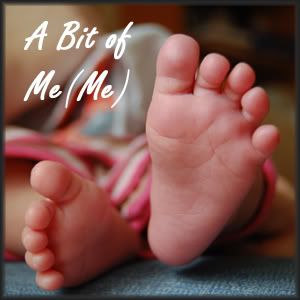One Crazy Summer by Rita Williams-Garcia
Publisher: Amistad
Publication date: February 2010
ISBN: 9780060760885
Source: Library
Delphine, 11-years-old, and her two younger sisters are going to spend their summer in Oakland, California, with the mother that left them. Delphine does not expect much, but gets even less when their mother simply sends them off to spend their days at a summer camp run by the Black Panthers. All three of them unexpectedly learn a lot both about themselves and their mother during that crazy summer.
Things I Liked:
This book was fabulous! Williams-Garcia manages to combine an interesting and important bit of history with excellent writing and delightful characters. I positively adored Delphine and her sisters, particularly the way they interact with one another. Each sister is unique and has personality enough to fill multiple books. It's nice that we learn about history and the issues that were happening at that time. But, really, this book is all about Delphine and how she grows, changes, and begins to understand her mother. Her voice is just perfect, making me feel like I had a little sister I never knew about. Pretty much, I agree with those who mention this as a Newbery contender. Beautiful writing, memorable characters, and an interesting topic. Here are some favorite parts:
I just felt a bit sorry for the kids because their mother so obviously didn't care about them. I wanted to cry for them, especially when Delphine would have to prepare herself so she didn't feel bad about being ignored or dismissed. And I'm not sure how much kid-appeal the story will hold, though I think they might enjoy the characters.
Read-alikes:
Reminded me a bit of Waiting for Normal by Leslie Connor
The Rock and the River by Kekla Magoon
BOOK CONTENT RATINGS:
s-factor: none
mrg-factor: none
v-factor: none
Overall rating: *****
Publisher: Amistad
Publication date: February 2010
ISBN: 9780060760885
Source: Library
Delphine, 11-years-old, and her two younger sisters are going to spend their summer in Oakland, California, with the mother that left them. Delphine does not expect much, but gets even less when their mother simply sends them off to spend their days at a summer camp run by the Black Panthers. All three of them unexpectedly learn a lot both about themselves and their mother during that crazy summer.
Things I Liked:
This book was fabulous! Williams-Garcia manages to combine an interesting and important bit of history with excellent writing and delightful characters. I positively adored Delphine and her sisters, particularly the way they interact with one another. Each sister is unique and has personality enough to fill multiple books. It's nice that we learn about history and the issues that were happening at that time. But, really, this book is all about Delphine and how she grows, changes, and begins to understand her mother. Her voice is just perfect, making me feel like I had a little sister I never knew about. Pretty much, I agree with those who mention this as a Newbery contender. Beautiful writing, memorable characters, and an interesting topic. Here are some favorite parts:
Mother is a statement of fact. Cecile Johnson gave birth to us....Mommy gets up to give you a class of water in the middle of the night. Mom invites your friends inside when it's raining. Mama burns your ears with the hot comb to make your hair look pretty for class picture day. Ma is sore and worn out from wringing your wet clothes and hanging them to dry; Ma needs peace and quiet at the end of the day. p 14
I never thought about what Delphine meant or if it had a meaning at all. It was just my name. Delphine had a grown sound like it was waiting for me to slide into it, like a grown woman slides into a mink coat and clips on ruby earrings. I figured since Cecile didn't have a mink coat or ruby earrings to give me when I grew up, she had dreamed up a name that I would grow into. p 82
Good old Merriam Webster. I trusted Merriam because I thought, instead of having children she didn't want, she wrote the dictionary. She didn't have anything else better to do, probably didn't have sisters and brothers to see after, which was why she knew every word in the world. p 83
Wouldn't Little Bobby rather be alive than be remembered? Wouldn't he rather be sitting out in the park than have the park named after him? I wanted to watch the news. Not be in it. The more I thought about it, the more I had my answer. We were staying home tomorrow and the next day and the day after that. p 133Things I Didn't Like:
I just felt a bit sorry for the kids because their mother so obviously didn't care about them. I wanted to cry for them, especially when Delphine would have to prepare herself so she didn't feel bad about being ignored or dismissed. And I'm not sure how much kid-appeal the story will hold, though I think they might enjoy the characters.
Read-alikes:
Reminded me a bit of Waiting for Normal by Leslie Connor
The Rock and the River by Kekla Magoon
BOOK CONTENT RATINGS:
s-factor: none
mrg-factor: none
v-factor: none
Overall rating: *****
What do you think are some possible award winners from this year?
Posted as part of Tween Tuesday, hosted by GreenBeanTeenQueen.
If you buy through my Amazon linkage, I will get a very small percentage
 9:13 AM
9:13 AM
 mixagrip
mixagrip

 Posted in
Posted in


























